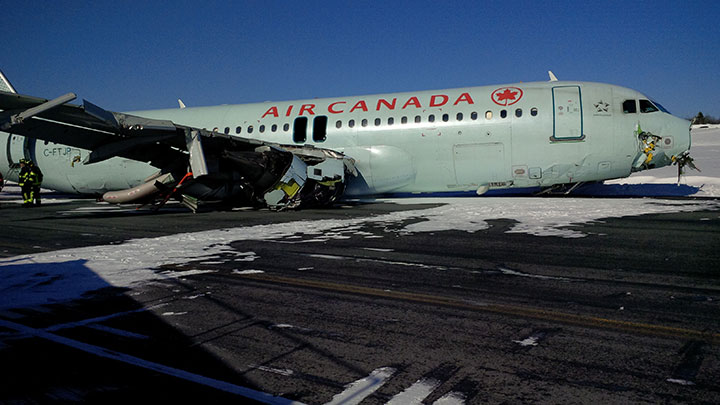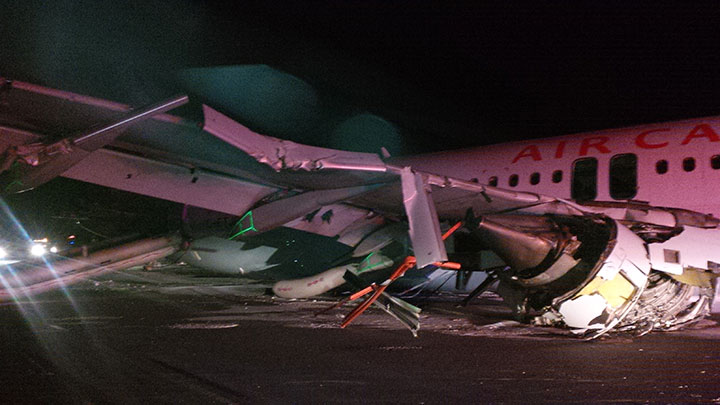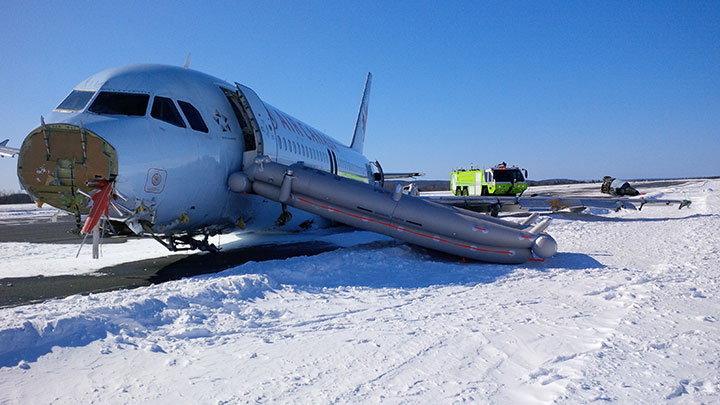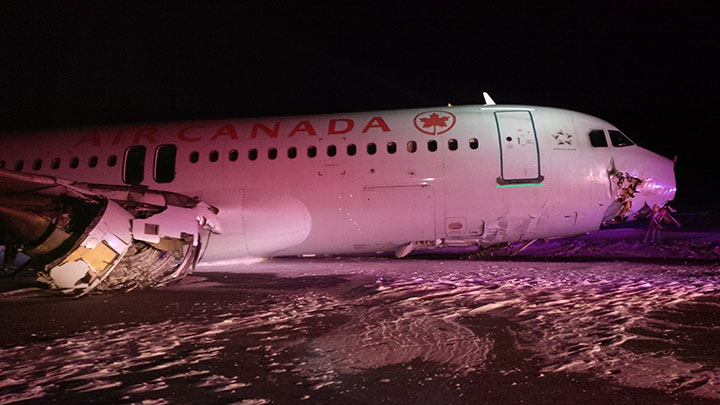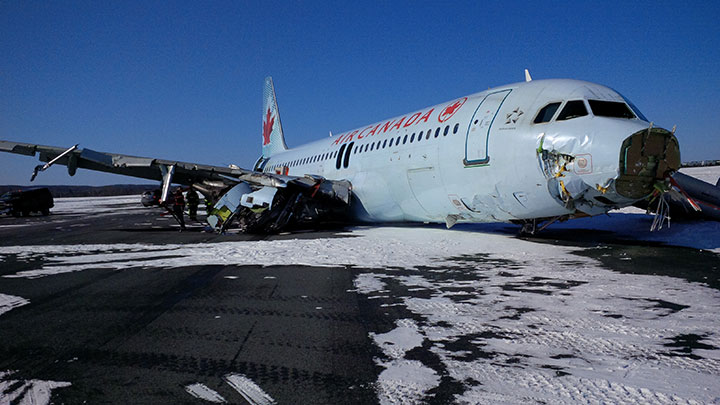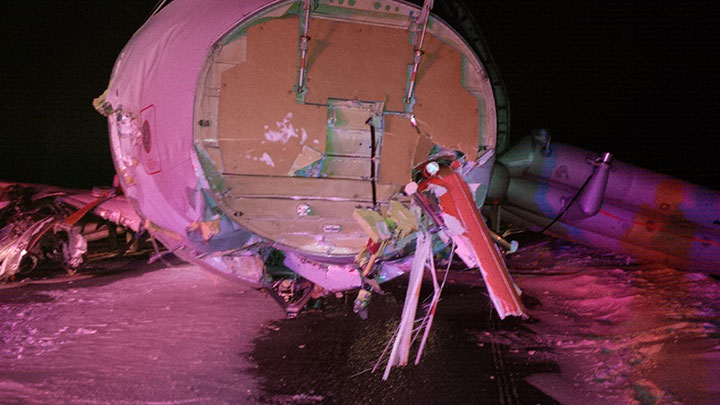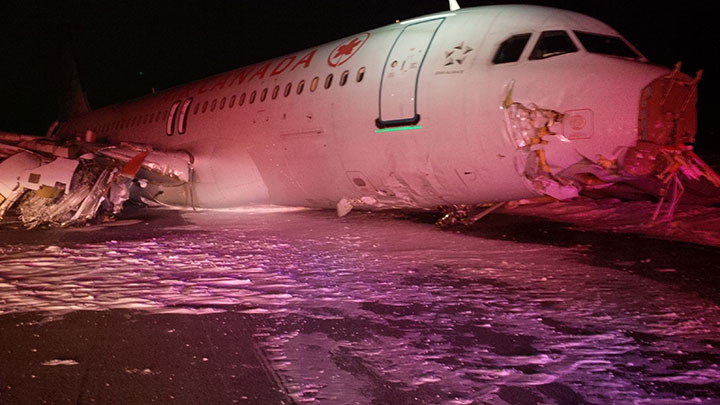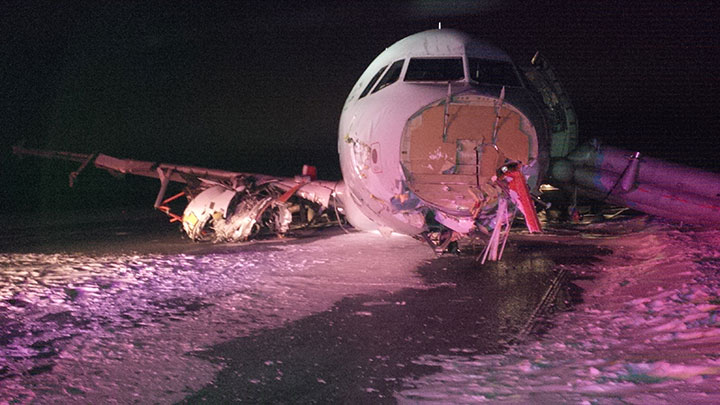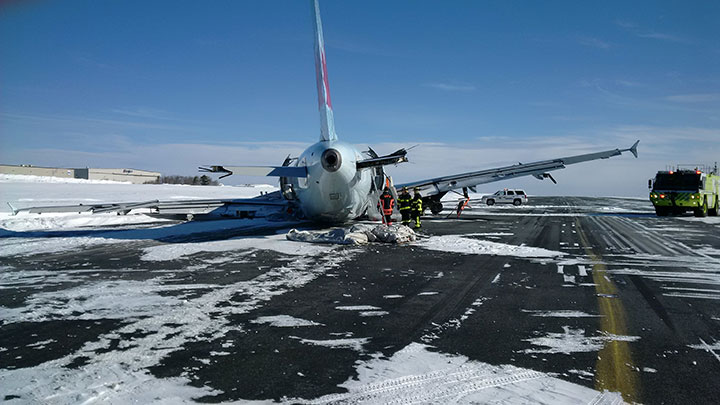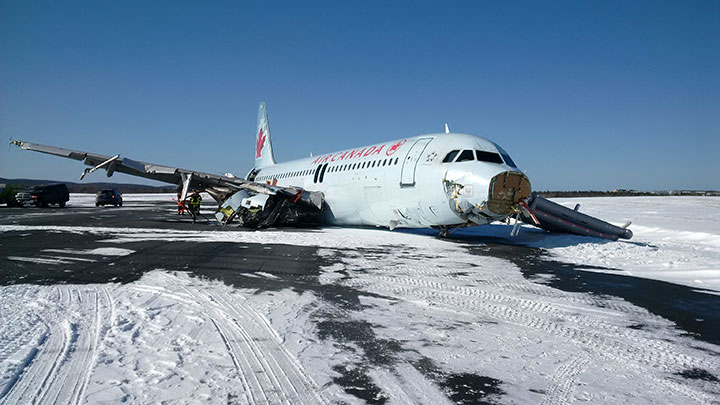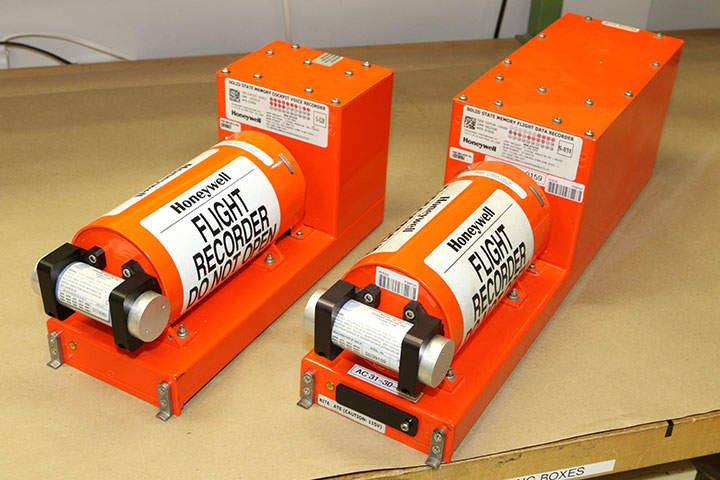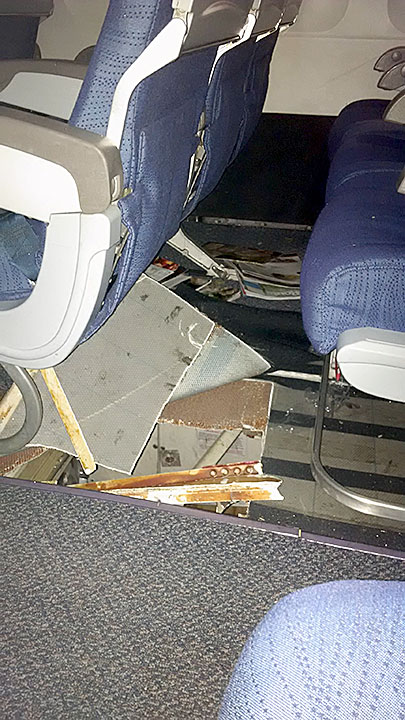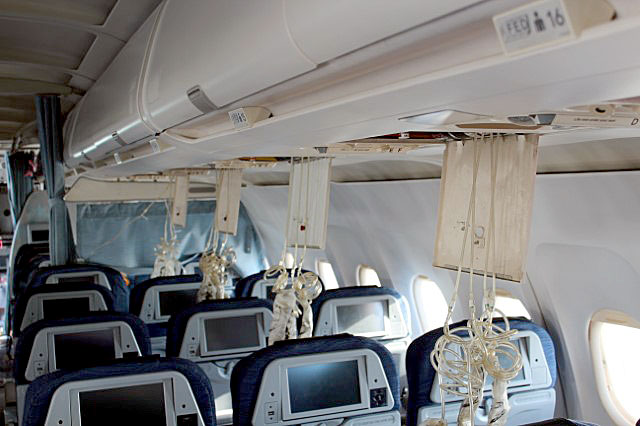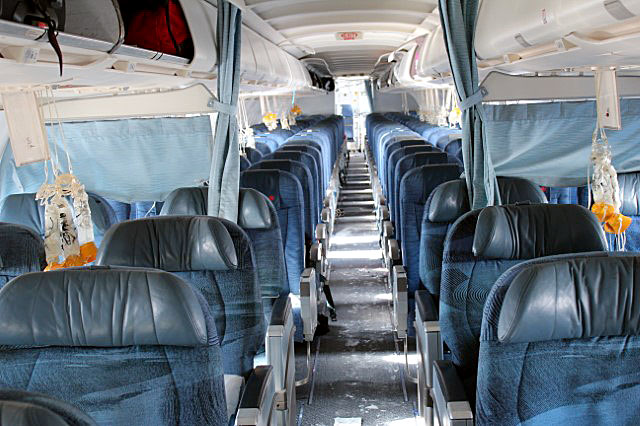Collision with terrain
Air Canada
Airbus Industrie A320-211, C-FTJP
Halifax/Stanfield International Airport
Halifax, Nova Scotia
The occurrence
On 29 March 2015, an Air Canada Airbus A320-200 aircraft (registration C-FTJP, serial number 233), was being operated as Flight AC624 from Toronto, Ontario, to Halifax, Nova Scotia, with 133 passengers and 5 crew on board.
The aircraft was flying the localizer approach procedure to land on Runway 05 at the Halifax Stanfield International Airport. A localizer approach only provides pilots with lateral guidance to align the aircraft with the runway for landing. During the approach, the engines of the aircraft severed power transmission lines, and then the main landing gear and rear fuselage impacted the snow-covered ground about 225 metres before the runway threshold. The aircraft continued through a localizer antenna, then impacted the ground in a nose down attitude, about 70 metres before the threshold. It then bounced and slid along the runway, coming to rest on the left side of the runway about 570 metres beyond the threshold.
The passengers and crew evacuated the aircraft; 25 people sustained injuries and were taken to local hospitals. The aircraft was substantially damaged. There was no post-crash fire.
Media materials
News releases
Airline approach procedures, snowstorm and airfield lighting were factors in March 2015 collision with terrain in Halifax, Nova Scotia
Read the news release
Ground contact prior to runway threshold of Air Canada Flight 624 during approach to Halifax Stanfield International Airport (A15H0002)
Read the news release
Collision with terrain involving an Air Canada Airbus A320 at Stanfield International Airport, Halifax, Nova Scotia
Read the news release
Backgrounders
Speeches
News conference for the release of Aviation Investigation Report A15H0002: Opening remarks
Kathy Fox, TSB Chair
Doug McEwen, TSB Investigator-in-Charg
Deployment notice
TSB deploys a team to a runway excursion involving an Air Canada aircraft that occurred at the Halifax International Airport in Nova Scotia
Dartmouth, Nova Scotia, 29 March 2015 - The Transportation Safety Board of Canada (TSB) is deploying a team to a runway excursion involving an Air Canada Airbus A320 aircraft that occurred at the Halifax International Airport, Halifax, Nova Scotia. Approach-and-landing accidents are on our Watchlist. The TSB will gather information and assess the occurrence.
Animations
A15H0002: Collision with terrain at the Halifax Stanfield International Airport
Investigation information
Download high-resolution photos from the TSB Flickr page.
Class of investigation
This is a class 3 investigation. These investigations analyze a small number of safety issues, and may result in recommendations. Class 3 investigations are generally completed within 450 days. For more information, see the Policy on Occurrence Classification.
TSB investigation process
There are 3 phases to a TSB investigation
- Field phase: a team of investigators examines the occurrence site and wreckage, interviews witnesses and collects pertinent information.
- Examination and analysis phase: the TSB reviews pertinent records, tests components of the wreckage in the lab, determines the sequence of events and identifies safety deficiencies. When safety deficiencies are suspected or confirmed, the TSB advises the appropriate authority without waiting until publication of the final report.
- Report phase: a confidential draft report is approved by the Board and sent to persons and corporations who are directly concerned by the report. They then have the opportunity to dispute or correct information they believe to be incorrect. The Board considers all representations before approving the final report, which is subsequently released to the public.
For more information, see our Investigation process page.
The TSB is an independent agency that investigates air, marine, pipeline, and rail transportation occurrences. Its sole aim is the advancement of transportation safety. It is not the function of the Board to assign fault or determine civil or criminal liability.
